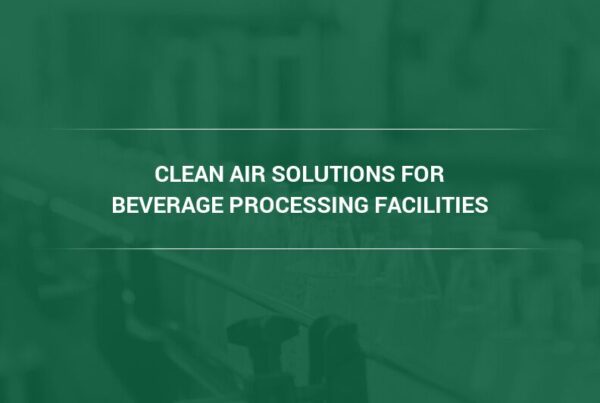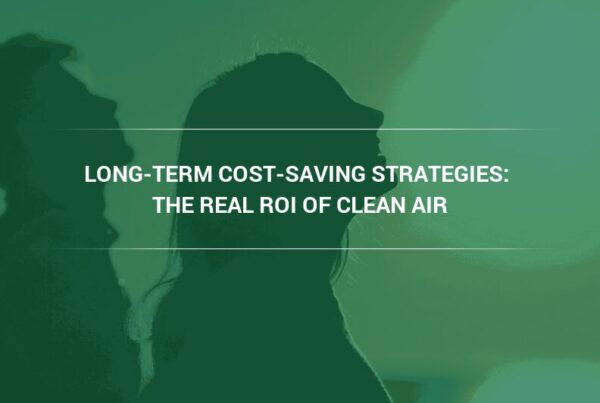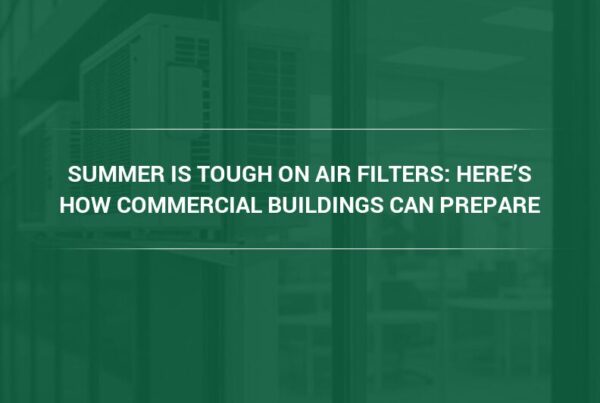There are many different kinds of air pollution, but the most dangerous type by far is particulate matter. Particulate matter, or PM, is thought to be responsible for millions of cases of respiratory diseases and millions of deaths around the world every year. It is made out of tiny particles, capable of damaging the cells of people’s lungs.
The World Health Organization says that particulate matter is the biggest threat to the health of people in countries with poor air quality. For this reason, it’s important that industrial air filters be used to protect people from particulate matter exposure. Why is particulate matter so dangerous to human health? What can be done to reduce overall levels of particulate matter in the air?
Commercial HVAC Air Filters Absorb Different Types of Particulate Matter
Particulate matter doesn’t refer to any single air pollutant, but instead refers to small, dangerous particles of air pollution in general. PM can have a wide variety of sources and compositions because of this. Possible sources of particulate matter can include both natural and manmade sources.
Natural sources of particulate matter are things like volcanoes and forest fires. Human-related sources of particulate matter include the combustion of fossil fuels, the disruption of dirt and dust at construction sites, the burning of biofuels like wood for cooking or heating, and the disruption of road dust by vehicle traffic.
The chemical makeup of particulate matter often includes the pollutants that the EPA has designated as criteria air pollutants. The criteria air pollutants include particulate matter (PM), sulfur dioxide, nitrogen oxide, and volatile organic compounds. Particulate matter is a catch-all term that can refer to almost any type of solid in sizes down to 0.1-micron, very small. To have a better understanding of particulate, 1 micron is 1/100th of the diameter of a human hair, it cannot be seen by the human eye.
Sulfur dioxide is a colorless gas which contributes to acid rain. The primary source of sulfur dioxide in the atmosphere is the combustion of fossil fuels by industrial facilities and power plants. Other sources of sulfur dioxide include volcanoes and the tailpipes of cars or other forms of fossil fuel burning transportation.
Nitrogen oxide is a colorless and odorless gas that causes haze and inflames the lining of the lungs. Nitrogen oxide is released primarily by trucks, cars, off-road equipment and power plants. Volatile organic compounds are compounds which are capable of interacting with sunlight and heat in the atmosphere creating ozone. While ozone is beneficial in the upper atmosphere, it’s a toxic air pollutant at ground level.
Industrial Air Filtration Units Defend against Respiratory Diseases
Particulate matter exposure irritates the lungs, leading to increased susceptibility to infection. Exposure to PM pollution can cause a number of different health problems, including stroke, heart attacks, chronic obstructive pulmonary disorder, asthma, and even premature death in those who have pre-existing cardiovascular or respiratory conditions. Industrial air filtration units help protect people’s lungs and prevent them from developing these diseases.
The IEA (International Energy Agency) estimates that every year around the world around 6.5 million people are killed by air pollution. Much of these deaths are directly attributable to particulate matter. PM pollution is so dangerous because it is so tiny. It’s small enough that it can enter the human lungs and bloodstream, damaging the cells in them.
“Particulate matter is grouped into three different categories, PM1, PM2.5 and PM10. These particles are smaller than 1 µm across, smaller than 2.5 µm across, and smaller than 10 µm across respectively,” stated Camfil’s Charlie Seyffer, Manager of Marketing & Technical Materials and 37-year ASHRAE member and active committee participant. “The smaller the air pollution particles are, the more dangerous they are. PM1 is the most dangerous form of air pollution to human health because it’s so small and it is where 99% of all airborne particles reside.” (1)
Industrial HEPA Air Filters Absorb almost All Particulate Matter
Industrial HEPA air filters can be critical tools for defending people from exposure to particulate matter 1.
“HEPA stands for High-Efficiency Particulate Air, and HEPA filters are capable of absorbing up to 99.97% of all particulate matter,” says Seyffer. “HEPA filters are available for HVAC systems and as part of stand-alone industrial air purifiers.” (2)
If you are considering purchasing an industrial HEPA air filter, make sure that the filters you buy are true HEPA filters. Some filters advertise themselves as being “HEPA-type” or “HEPA-like.” This means they use similar construction and design to HEPA filters, but they may not actually capture the tiniest, most dangerous particles of particulate matter, the particles which make up PM1. It’s important the filters you buy actually trap these very small particles of particulate matter.
What Countries Need Industrial Air Filtration and Ventilation The Most?
The regions of the world that suffer the most from particulate matter air pollution include rapidly industrializing nations like India and China. Cities like Beijing, China, and Allahabad, India suffer from some extreme PM pollution that causes thousands of deaths and hospitalizations. These cites need proper industrial air filtration and ventilation more than many other cities.
“Developing nations struggle with air pollution due to a variety of factors, such as lack of regulation and heavy use of dirty fossil fuels for energy production,” states Seyffer. “Coal produces cheap, plentiful energy, but it is also extremely pollutive. It releases the most particulate matter out of any source of energy, and since coal is heavily relied upon in industrializing nations, pollution levels in these nations becomes higher.” (3)
Control Policies to Enhance the Effectiveness of Commercial Air Filtration Systems
Commercial air filtration systems, along with industrial air filters, are necessary for people’s health. Yet they must be combined with sustainable policies to reduce emissions of particulate matter if ambient air quality is ever going to improve. Strategies to reduce ambient levels of PM air pollution include switching to cleaner forms of energy, investing in emissions reduction technology, expanding public transportation systems, and instituting stricter regulations on emissions levels.
Restrictions can and should be made on emissions from industrial facilities and vehicles. Violations of restrictions can be punished with fines, and those who meet emissions targets can be given positive incentives like tax breaks.
Investments should be made in cleaner types of air pollution, such as solar energy or wind energy. These forms of renewable energy emit almost zero emissions and can be used to power electric vehicles that will further reduce air pollution levels. Environmentally-friendly technology like air scrubbers can also help reduce air pollution in addition to technology like electric vehicles. Investing in public transportation systems like bus and rail lines can reduce air pollution by cutting the overall amount of vehicles on the road.
Sources:



